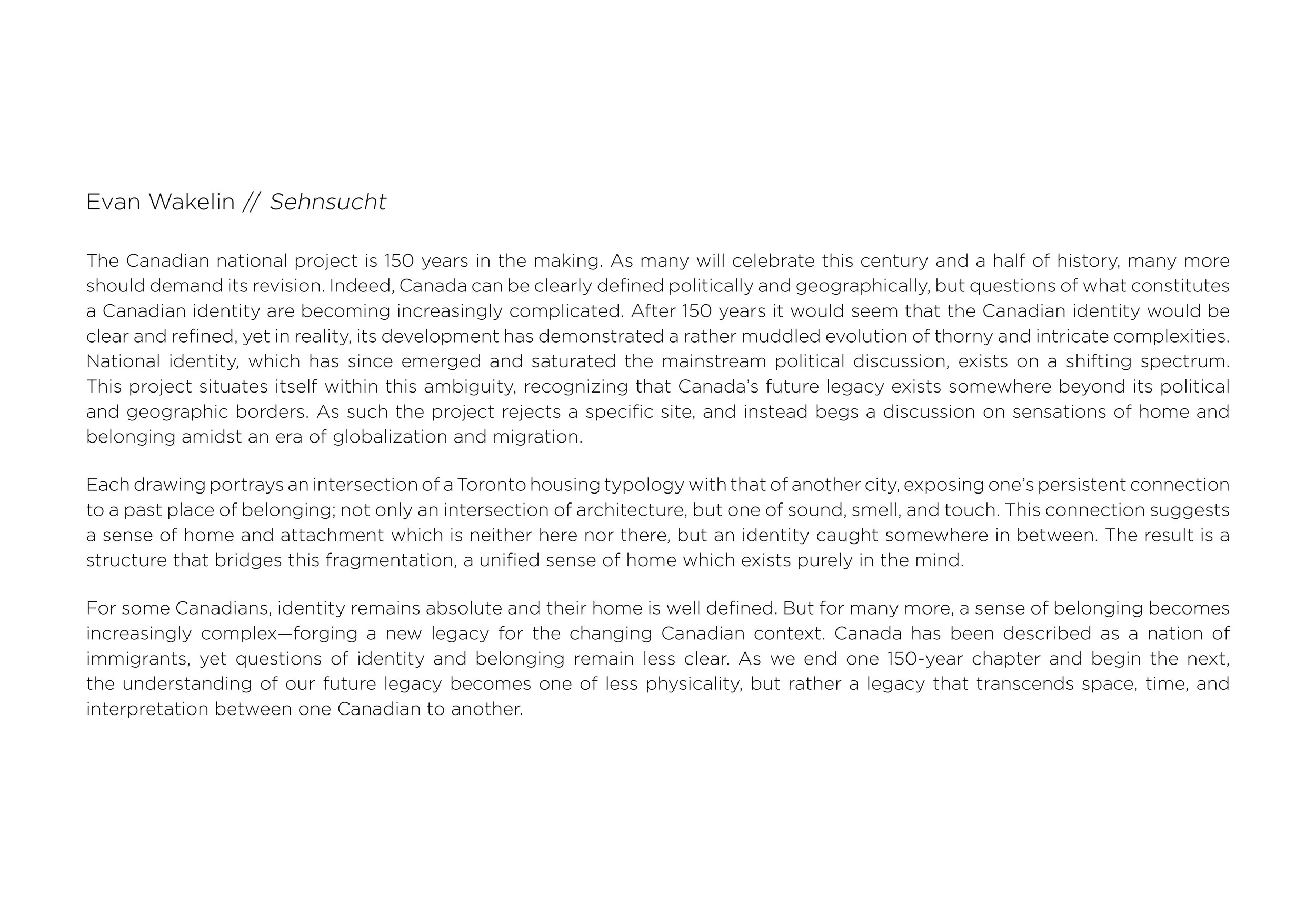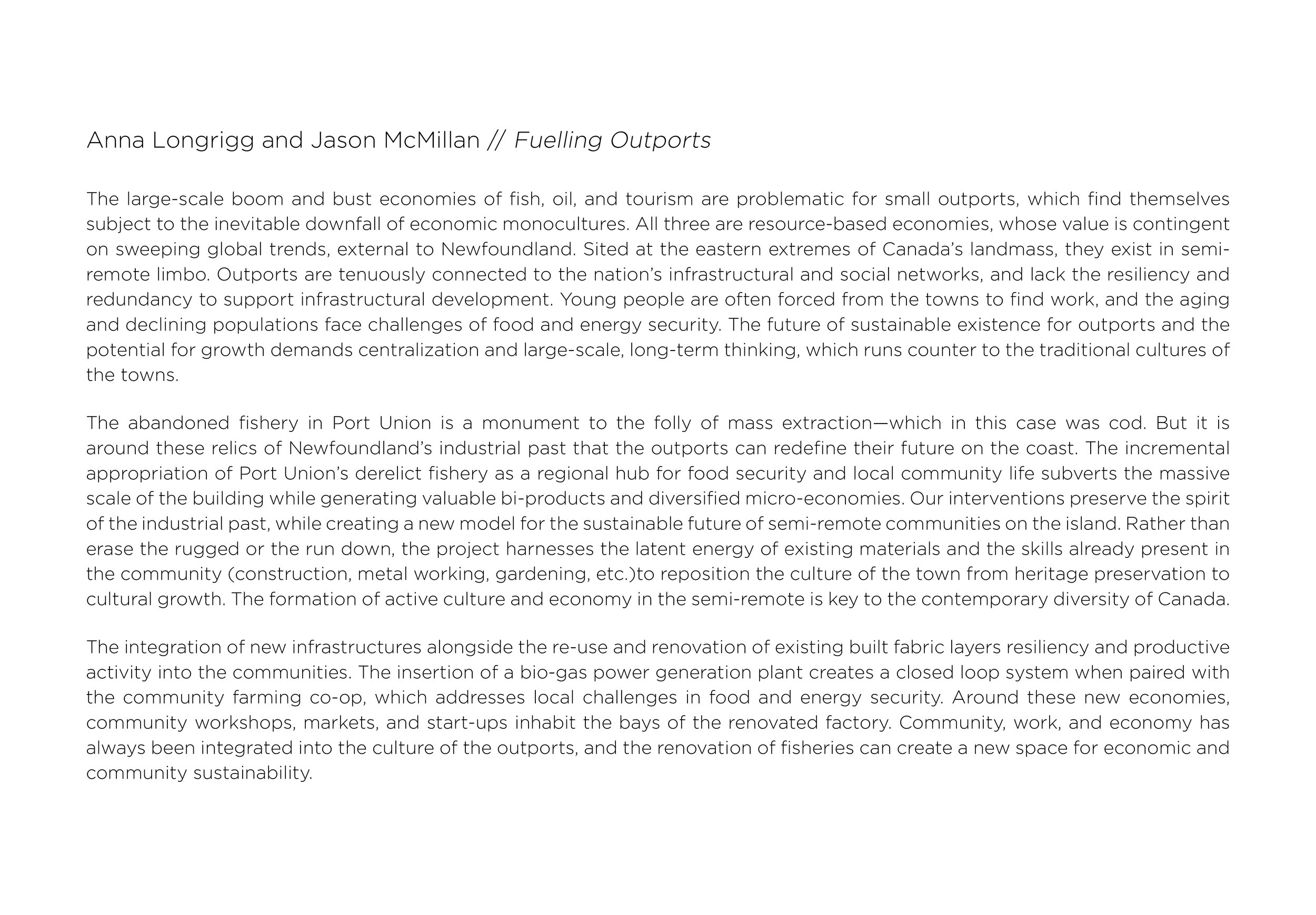
FUTURE LEGACIES COMPETITION
DESIGN FOR CANADA'S NEXT 150 YEARS
In parallel with Volume 37: Future Legacies and in conjunction with the 2017 celebration of Canada’s sesquicentennial anniversary, the editors of the Site Magazine launched a competition inviting submissions that, through design, would take a position on the future history of Canada’s national project. Entrants were challenged to develop proposals that considered the nation’s history and current context, and simultaneously offered new perspectives on the role of legacy as a driving force in the creation of the nation.
With over 150 years to reflect upon, and truly many more years, Canada’s anniversary compels us to cast a critical eye on the legacies of the past century and half, and simultaneously to project ideas for what the next 10, 50, 100, or 150 will bring. While Volume 37: Future Legacies presents a broad discussion of legacy-making—past and present, Canadian and international—the Future Legacies Competition: Design for Canada's Next 150 Years reflects specifically on the Canadian condition, offering design propositions that engage and challenge the role of legacy in nation building.
The competition brief called for a re-evaluation of the Canadian national project, considering various scales of site and time—from human to geological—and addressing Canada’s many readings, layers, realities, and identities.
We received submissions from across the nation, as well as seven different countries internationally, and we were overwhelmed with the quality, diversity, and sensitivity of work submitted. The submissions reflect the spectrum of Canadian geography, culture, population, and politics, and raise pertinent questions to be considered as we move forward collectively.
Our esteemed jury, comprised of notable Canadian and international designers and thinkers, provided thoughtful and critical evaluation of the submissions, reviewing the material in light of the questions posed, and offered reflections on the value of this project at our current moment in Canadian history.
“[T]here is no such thing as the tabula rasa, or the empty blank page. Every intervention we make as designers must respond to the complexities of cultural and social power relations, as well as geography, topography, ecology, history and many other conditions. This competition embodies the urgency felt globally – but especially in Canada – that new models of life and relationships to territory are emerging, and we must make bold proposals for the future rooted in the existing.
The work I saw varied greatly, from polemic one-liners to intricate and complex strategies, with a high level of thinking and execution.”
“The quality of work and topics represented make me very hopeful for future architecture in the country and the national debates to be had regarding architecture, urbanism, and landscape.”
“A series of critical reflections on what the core of Canadian identity is. This is particularly timely, as just in 2016 Prime Minister Justin Trudeau declared, “There is no core identity, no mainstream Canada” which he linked to Canada’s emergence as the world’s first ‘post-national state’. The projects, speculations, and stories presented within the competition provided a more holistic and sincere narrative on the complexities of Canadian identity, that question amongst other things our relationship to resources and nature, our formats for urbanizing the land, the importance of infrastructural developments, and how migration/immigration balances assimilation and distinction.”
From the original submissions, twenty projects were selected as finalists. From these finalists, five projects were selected as winning submissions, along with five runner-ups and five honourable mentions. The winning projects represent a diverse range of notions of Canada’s identity and legacy, ranging from the scale of the entire country to that of a suburban single-family home. In their diversity, these projects highlight the complexity of our contemporary Canadian condition and illuminate the opportunities for us, as designers, to engage with and, indeed, shape our collective future.
These projects, together with all other submissions, allow us to take stock of our current national context by celebrating, critiquing, challenging, and repositioning our history through design propositions for Canada’s Future Legacy. We thank all the participants—architects, landscape architects, artists, poets, planners, and thinkers—who submitted such thoughtful and provocative work, and we thank the jury for their generous and critical contribution to the competition.
Click on the images below for more details on the winning submissions...
JURY
Alissa North is a founding partner of North Design Office Inc., and the Director of the Master of Landscape Architecture Program at the University of Toronto.
Dagnija Smilga is an Associate at Hosoya Schaefer Architects and co-curator of The Baltic Pavilion at La Biennale di Venezia in 2016.
Dinu Bumbaru works at Heritage Montreal and was the Secretary General of ICOMOS.
Jack Self is an architect and Director of the REAL foundation and Editor-in-Chief of the Real Review.
Jason Hilgefort is the founder of Land+Civilization Compositions and the Academic Director of FUTURE+ Aformal Academy in Shenzhen.
Liam Young is the founder of the think tank Tomorrows Thoughts Today and co-runs the Unknown Fields Division.
Lola Sheppard co-founded Lateral Office and is co-editor of the journal Bracket.
Marc Ryan is a principal and co-founder of PUBLIC WORK.
Neeraj Bhatia is an Assistant Professor at the California College of the Arts and founder of The Open Workshop.
Zoe Coombes is a co-founder of Cmmnwlth.





















































































































